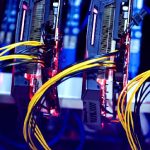A common restaking layer designed by the Andalusia Labs group has emerged from stealth to launch its mainnet at this time. Karak is a threat administration layer-2 blockchain resolution that simplifies the method of offering financial safety by restaking.
The corporate is predicated in San Francisco and Abu Dhabi. It beforehand raised $50 million at a $1 billion valuation from buyers together with Coinbase, Mubadala — an Abu Dhabi Sovereign Wealth Fund — Lightspeed, Bain Capital, Pantera Capital, Framework Ventures and others.
Raouf Ben-Har, the co-founder of Karak, advised Blockworks that Karak was created to resolve the issue of fragmented crypto-economic safety within the area, which was stopping startups from discovering preliminary success with their tasks.
Learn extra: Q&A: What’s going to the Bitcoin halving imply for Bitcoin L2s?
“They have been struggling to bootstrap their very own financial safety and suffered from extremely dilutive reward mechanisms, which was unlucky, particularly for essential infrastructure like bridges, oracles and different infrastructure layers,” Ben-Har stated.
For that reason, Ben-Har and his co-founder Drew Patel determined to create a common layer of belief relevant throughout any software program. This is able to allow builders to bypass the necessity to begin from scratch and keep away from being confined solely to Ethereum for safety measures.
“We envisioned Karak as the important thing to unlocking this new period of innovation. Just like how AWS made it simple and inexpensive for builders to entry and construct on the cloud, we wished to make it simple and inexpensive for builders to entry and construct on any belief community,” he stated.
Learn extra: Nirvana Cloud debuts as blockchain-optimized different to AWS and Google Cloud
In line with Patel, there are similarities between EigenLayer and Karak, within the sense that each groups are constructing a staking protocol that permits different tasks to entry financial safety to infrastructure layers.
“Just like EigenLayer, Karak has its personal model of AVSs dubbed Validation-as-a-Service, or VaaS,” Patel stated. “Nonetheless, in contrast to EigenLayer, which enshrines itself solely on Ethereum, Karak introduces this concept of common safety, or restaking for everybody, the place anybody can present crypto-economics with any asset on any chain.”
Ben-Har remarks that the safety of a restaked protocol is usually measured by the {dollars} that underlie its financial safety. With Karak, because of this these {dollars} could be supplied by property past ETH with out compromising safety.
“Many property have decrease alternative prices versus ETH, that means the [VaaS] has a better and rather more viable path to sustainable yields,” Ben-Har stated.
Learn extra: Restaking is a ticking time bomb
Ben-Har explains that in an ETH-only surroundings, the AVS must compete towards each ETH yield alternative with a brand new, novel threat profile — one thing that isn’t sustainable with out airdrop hypothesis.
“There are billions of untapped property, like stTIA, ARB, and lots of others, with only a few yield alternatives to create sustainable flywheels for VaaS constructing of their ecosystem,” he stated. “Every ecosystem is completely different and has its personal distinctive protocols that can create completely different VaaSs designed on high of their property. There isn’t any one-size-fits-all for each chain.”
The group notes that they’re at present experimenting with alternative ways to make use of the xERC20 commonplace and numerous message bridges to scale back liquidity fragmentation throughout liquid restaked tokens. They hope that this can enable them to create a common liquidity layer throughout chains to alleviate supply-demand mismatches.





